


Wondering how much it costs to build a fintech app? Whether you’re building a mobile banking app or making a digital wallet, the price depends on features, design, and compliance needs. In this guide, we’ll break down key cost factors so you know where your budget goes — and why it’s worth investing.
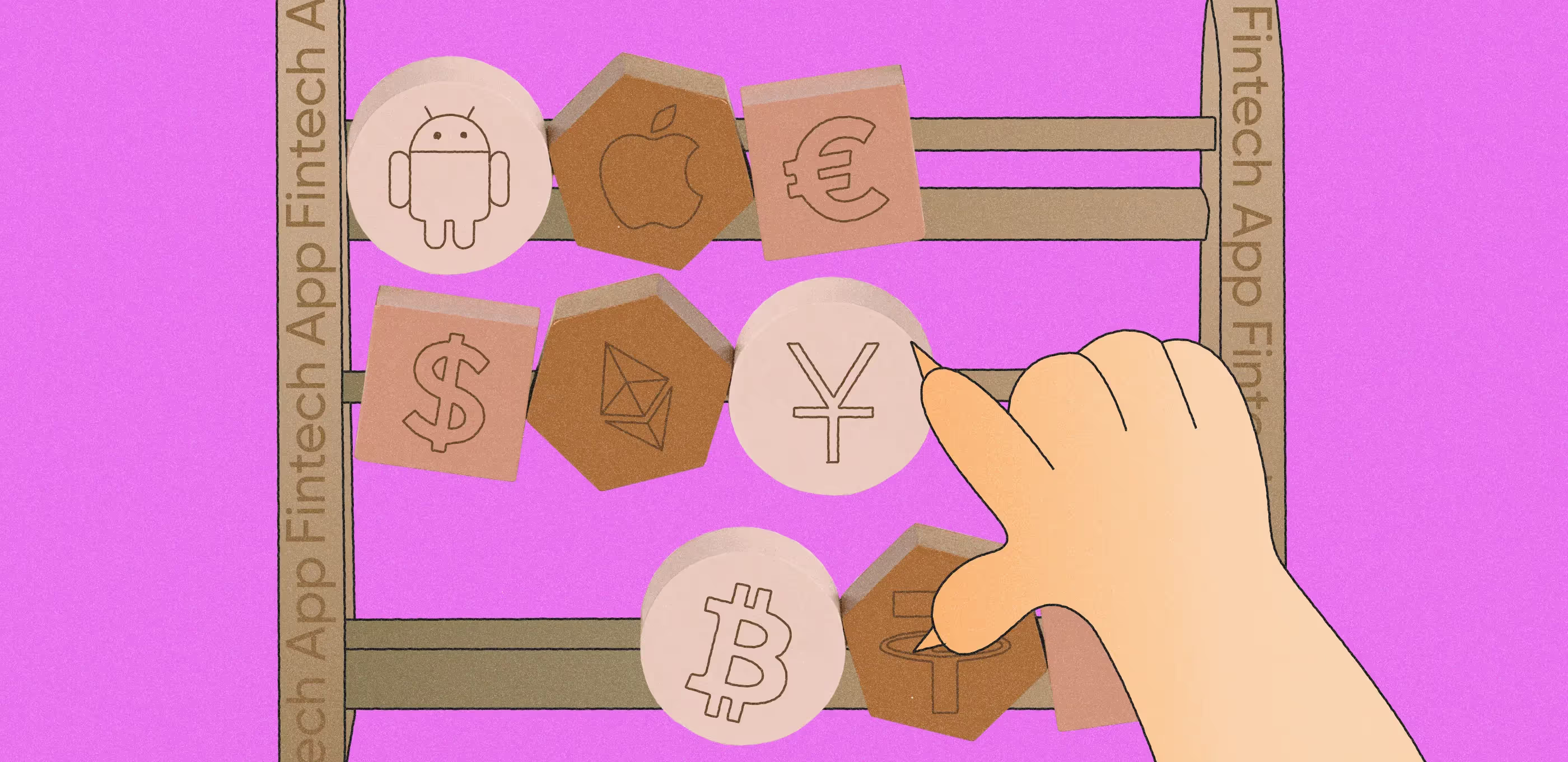
Let’s start with a different kind of numbers. According to Statista, the number of global fintech companies grew significantly from approximately 5,600 in 2008 to over 31,800 in 2024.
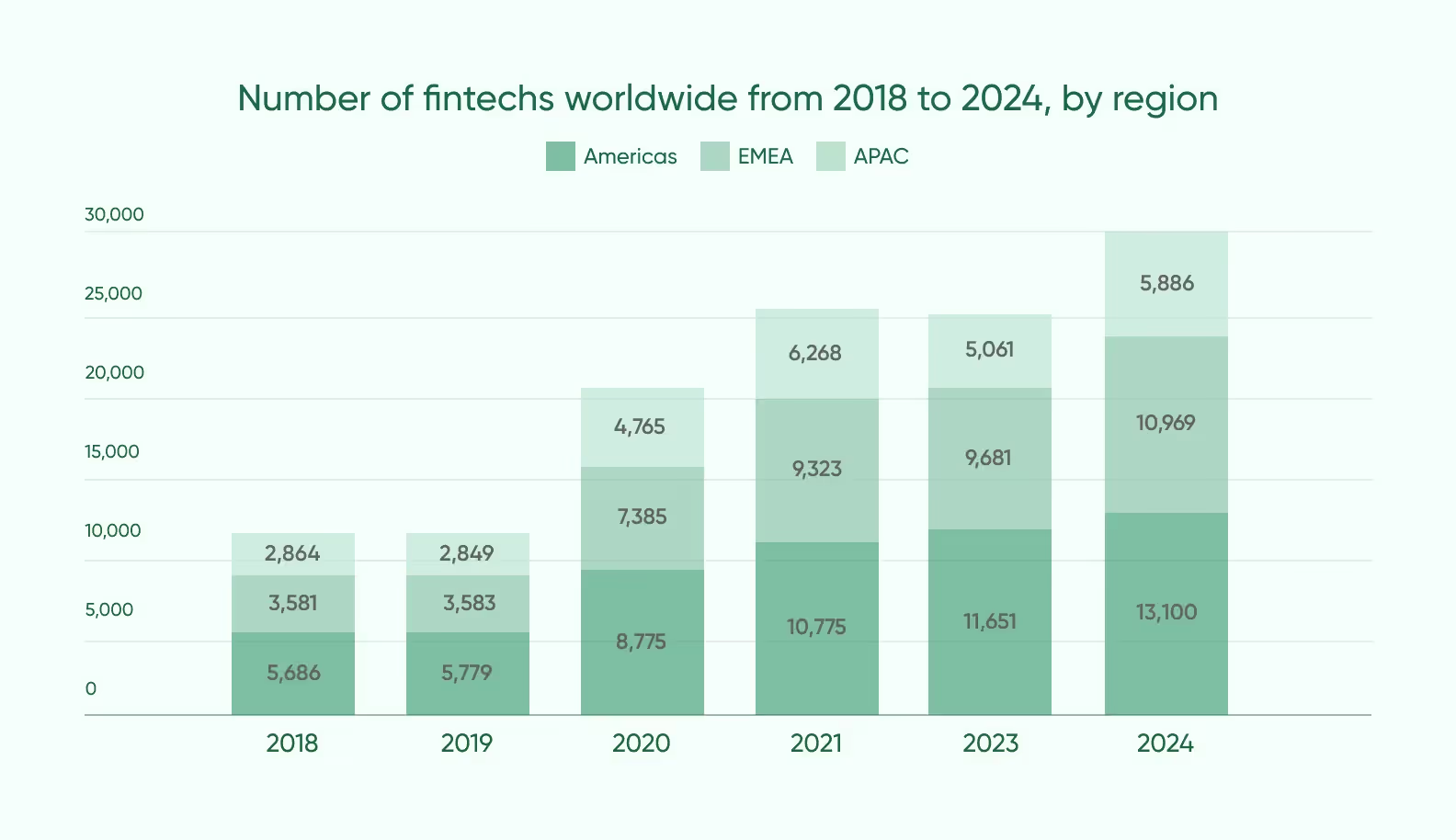
It’s only natural that the increased interest in fintech drives new opportunities for business — but how much would it cost to bring them to life?
But when it comes to fintech app development, don’t expect a universal answer. The final budget depends on what type of app you’re building, which features you include, and a range of additional factors.
A personal finance app will cost significantly less than a full-fledged mobile banking platform. The more complex the app type — like trading apps, digital wallets, or insurtech solutions — the more development time, compliance checks, and infrastructure are required.
Every extra feature adds to the cost. Simple logins and dashboards are affordable, but advanced elements like biometric authentication, real-time transaction monitoring, or AI-driven analytics require specialized expertise and more development hours, raising the budget.
Design complexity, tech stack, regulatory requirements, team location, and post-launch support all influence the final cost. These factors may not be as visible as features, but they play a big role in shaping the overall budget.
How exactly does the type of fintech product define the final cost? Well, it’s pretty simple: different fintech products come with different levels of complexity, and that directly impacts the budget. Let’s break down the most common app types and their approximate development costs.
Estimated price: $200,000 to $400,000+
Mobile banking requires a broad feature set: account management, secure transactions, card integration, and compliance with strict regulations. It’s a major investment but also a way to build strong customer loyalty and position your business as a reliable financial service provider.
Banking app development cost, however, can also be different. There are small platforms with a limited set of features, or superapps with gamification — naturally, the latter will be much pricier.
Estimated price: $150,000 to $300,000
Unlike banking apps, digital wallets are designed for spending and transferring your money, not managing it at the source. These apps let users pay, send, and store money seamlessly, and the challenge lies in flawless UX and airtight security.
Digital wallets may be cheaper than banking apps because no full banking services are offered, but the price still depends on features and complexity.
<div class="post_divider"></div>
⭐Our experience
We worked on KEM, a P2P solution for Kuwait, where online banking services are not universally available.
The main principle of the app: it works like a social network, allowing customers to transfer money within their contact lists.
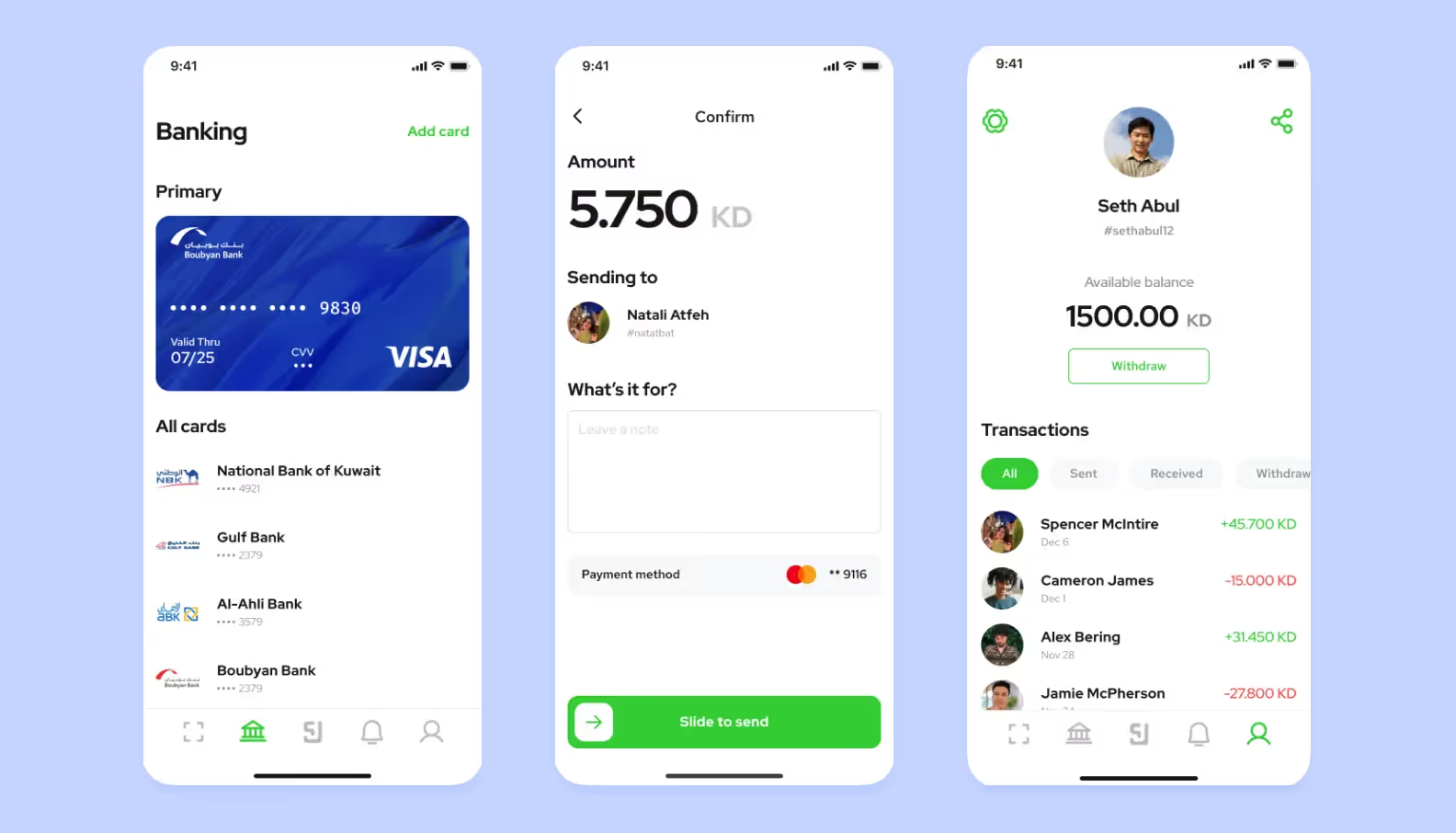
One of the big challenges was to gain access to banks’ APIs that allowed the app to make transactions. Banks have closed APIs because of sensitive financial information.
To make an MVP, we developed the entire backend with imaginary data. It worked — the team later managed to get access to local banks’ APIs on the condition that the technical team would be located in Kuwait.
We work in a way that allows seamless transition to in-house teams, so as soon as KEM assembled one, we handed over the code and the UI kit.
The result: the backend was rewritten with real APIs, and KEM entered the market. In the seed funding round, the app raised $1 million. Now, it plans to expand to the entire Gulf region.
<div class="post_divider"></div>
Estimated price: $250,000 to $500,000
Whether for stocks, crypto, or robo-advisory, these apps need real-time data, analytics, and integrations with trading APIs. All of these features impact the budget, and compliance adds extra complexity.
<div class="post_divider"></div>
⭐Our experience
Our case with Fintarget showed how a well-designed investment app can open up new revenue channels and attract a loyal user base.
BCS broker is one of the largest companies on the Russian stock market. And they offered a perfect tool to attract newbies to investing — today, we know it as copy-trading platforms. It means you don’t need to craft your own investing strategy — you can “auto-follow” a tested and reliable one instead.
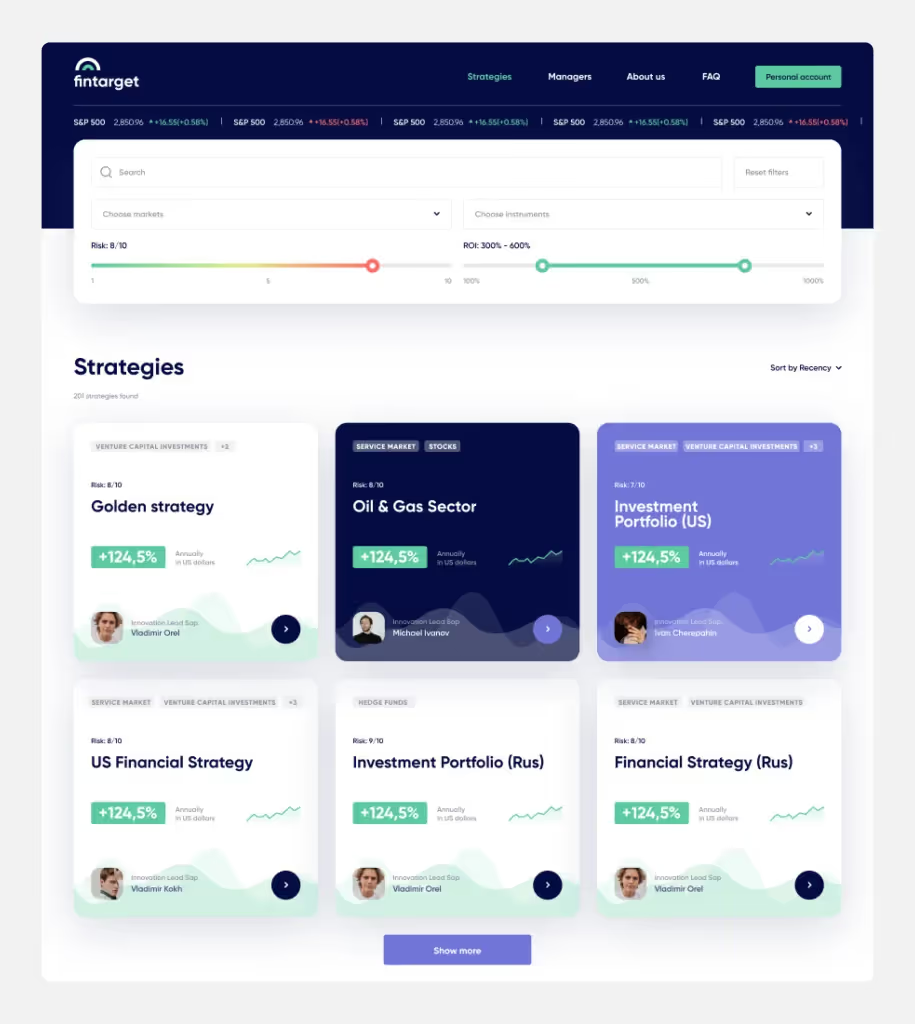
Since the product was aimed at beginners, we tried to make the interface as “game-like” as possible without losing the serious tone.
And here is how the strategy page looks:

The page contains all information that is important for making a decision on linking an account to the strategy. It has a record of dealings, results, a portfolio, characteristics, and details of a strategy. Also, there’s a chat with other investors, so you can ask for advice if you need it.
We also designed the profile page, as well as the billing page for each account. Besides, we added a knowledge base — a very useful addition for the beginners who are using the platform. We divided all the questions into specific categories and sorted them in a convenient way.
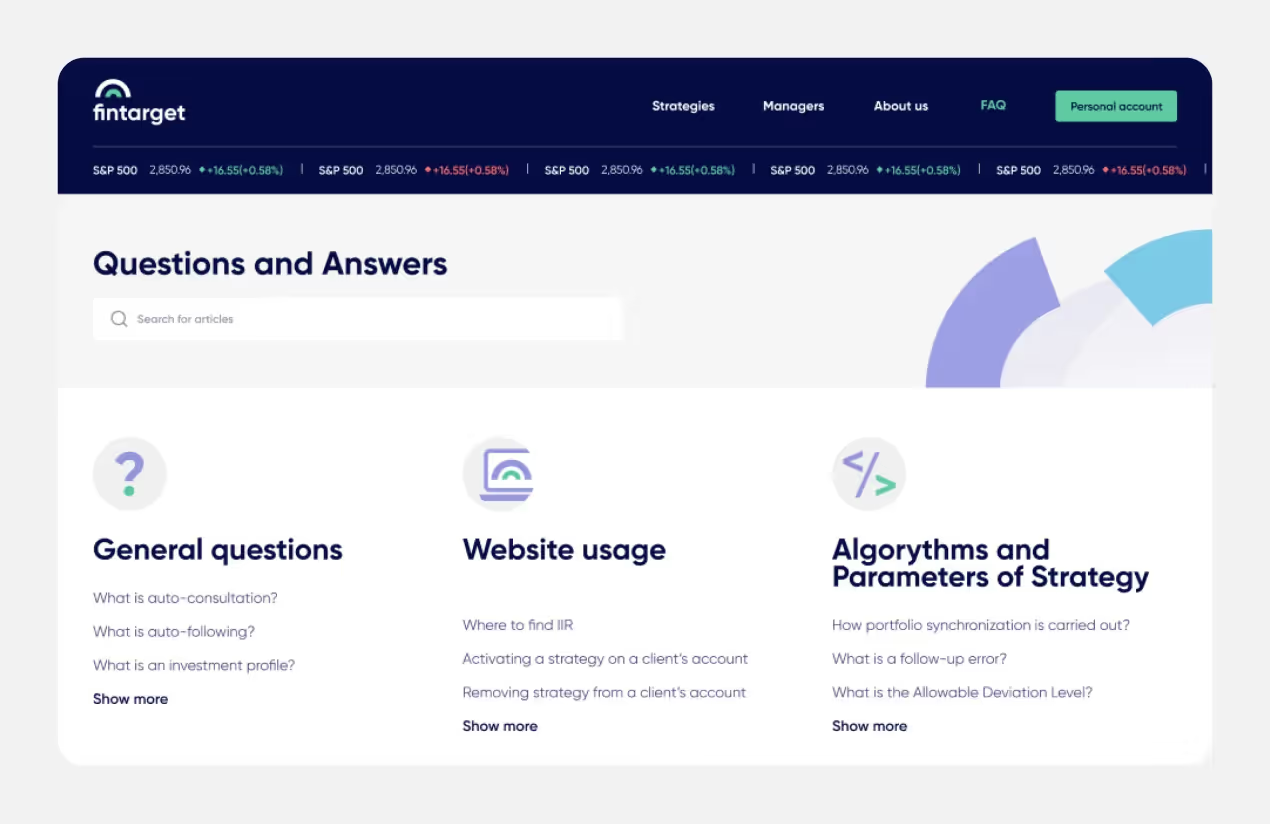
The result: the product has been launched and continues to operate to this day.
<div class="post_divider"></div>
Estimated price: $120,000 to $250,000
Insurance apps simplify claims management, policy comparison, and communication with providers. They’re less complex than banking apps but still require robust security (as pretty much everything in fintech does, if we’re being honest). For businesses, they improve customer engagement and cut down operational costs.
Estimated price: $80,000 to $150,000
Budgeting tools are the most cost-effective entry into fintech. They track expenses, set savings goals, and offer simple analytics. While more lightweight, they’re powerful for building user trust and laying the foundation for scaling into larger financial products.
Now that we’ve covered how the type of app impacts your budget, let’s zoom in on the features. Each functionality adds value to the user experience — but also, extra hours to development. Here’s what the most common fintech features typically cost.
Estimated price: $10,000 to $25,000
It’s important to ensure that the registration and onboarding are seamless and secure, so you probably don’t want to cut costs on this particular feature. However, it depends on what kind of user authentication you pick. For example, features like multifactor authentication or biometric sign-ins push costs higher, but they are usually critical for financial apps.
Estimated price: $20,000 to $50,000
Connecting to payment gateways or enabling money transfers requires rock-solid infrastructure. Sometimes, you can opt for third-party services like Stripe, but if you’re building your own custom fintech solution, this feature is essential.
<div class="post_divider"></div>
⭐Our experience
We solved complex payment flows while designing Dosis — an unusual Spanish-language (!) combination of a streaming service and a fintech solution (!!).
The main idea was to build a streaming platform that allows creators to share their cinematic works and receive direct payments from viewers. The donations would be made in crypto — it’s mostly accessible worldwide, and you don’t have to pay high commissions for international money transfers.

The app has a built-in player — the viewers don’t have to leave to watch the content. But they also don’t need to leave to make donations and payments! On the app, users participate in challenges and earn exclusive cryptocurrency ROLY. They can use it to donate to creators.
For Dosis, we combined the best UX/UI design practices from the media industry (we were inspired by Amazon Prime and Netflix), as well as from the fintech industry.
The result: We developed a simple design for the cryptocurrency wallet with familiar elements, like in banking applications. It helps beginners easily navigate and support their favorite creators without even having to know a lot about crypto.
Bonus: we added gamification and in-app challenges, allowing users to earn the currency and then use it to support their favorite creators.

We finished the project in two months, and the client was so happy with the design that he wanted to make a web version of the app with us.
<div class="post_divider"></div>
Estimated price: $15,000 to $40,000
From SSL protocols to fraud detection systems, security layers protect sensitive financial data. It’s one of the most important — and non-negotiable — cost drivers in fintech application development. Depending on how many layers of protection you need and how complex they will be, the final price may change.
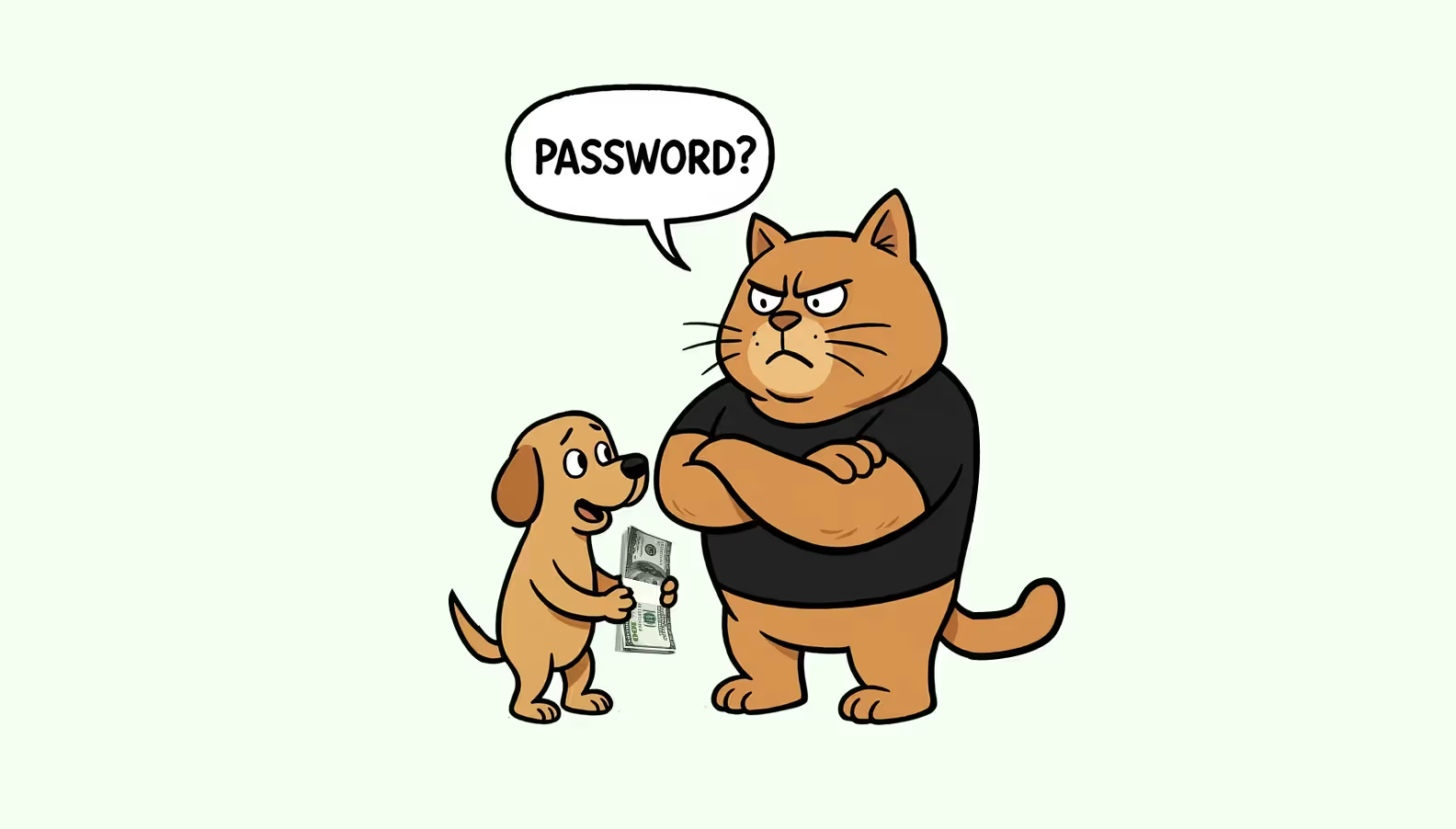
Estimated price: $10,000 to $30,000
Users want clarity: expense charts, investment tracking, or savings goals. Dashboards make financial data digestible and easy to understand. However, they require additional development for accuracy and real-time updates.
Unlike security or payment integration, this part is actually negotiable — not every fintech app necessarily needs an extensive analytics system. If reporting isn’t exactly the killer feature of your project, you can even opt for third-party services to cut costs here.
Estimated price: $5,000 to $15,000
Push notifications for transactions or account updates seem simple but are key to user engagement. More advanced personalization (e.g., AI-driven alerts) increases development costs.
Even in a completely custom fintech app, you can’t always go without third-party services. Whether it’s open banking APIs, credit score providers, or analytics tools, integrations extend your app’s functionality.
<div class="post_divider"></div>
⭐Our experience
With Abel, we carefully stitched together multiple APIs to deliver value while optimizing costs. In this case, it included us basically making a free backend for our client 😅
Our clients wanted us to make a secure and convenient cryptowallet that would allow them to:
We used a lean, strict design, but implemented some bright accents, such as blue and green, because the project was created as part of a future educational system about crypto. While no gamification was needed immediately, we had to keep that in mind and make the design as modern and adaptable as possible.
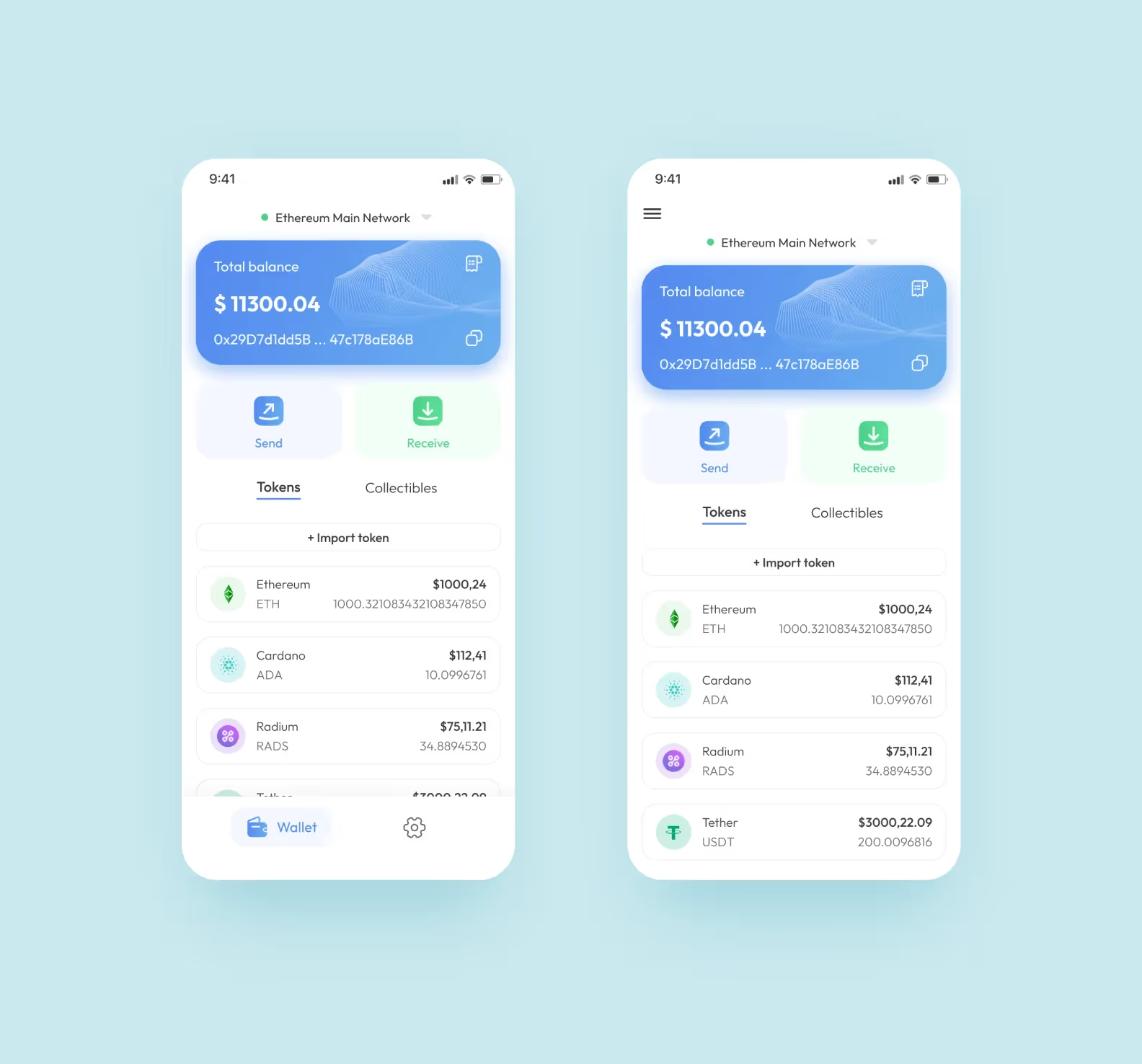
However, our main challenge was to make the app fully decentralized: all data should be stored on the user's device, not on some server. It means the app should have no backend, and blockchain data should be accessed via APIs.
To handle this, we figured out how to make a free backend, choosing several APIs for different tasks and combining them into one functional backend.
The result: the clients are using the MVP to attract investors. We spent 1268 hours on this project: 59 on design, 327 on testing, and the rest — on development.
<div class="post_divider"></div>
When planning a fintech app, most businesses focus on app type and features. While those are the biggest drivers, there are plenty of other elements that quietly shape your budget. Some of them might not be obvious at first — but they can make the difference between a lean, efficient build and an overblown project. Let’s dive into the eight factors that have the biggest influence on fintech mobile app development costs.
The complexity of your app is the foundation of its cost. A lightweight budgeting app with basic charts and account connections will be far cheaper than a multi-level trading platform with real-time stock data, advanced analytics, and integrations with multiple third-party services.
The more screens, workflows, and logic your app requires, the more hours your fintech app developers, designers, and QA testers will need. It’s not just about the initial build, either: more complexity means more ongoing maintenance and support.
But a complex app doesn’t mean a better app. To determine just how complex a fintech service has to be, we lean on product discovery: a business analysis that includes market research, competitor analysis, and a deep dive into the project’s pros and cons. It helps to understand what to focus on during development and what features your users will actually need.
Do you want to build for iOS, Android, or both? Choosing one platform can cut your budget, but it also limits your audience. Many fintech startups start with a single-platform MVP to validate the idea quickly, then expand once traction is proven.
Alternatively, cross-platform frameworks like React Native can help balance cost and coverage — though certain performance-heavy features may still require native development. Each decision here comes with trade-offs in budget, timeline, and scalability.
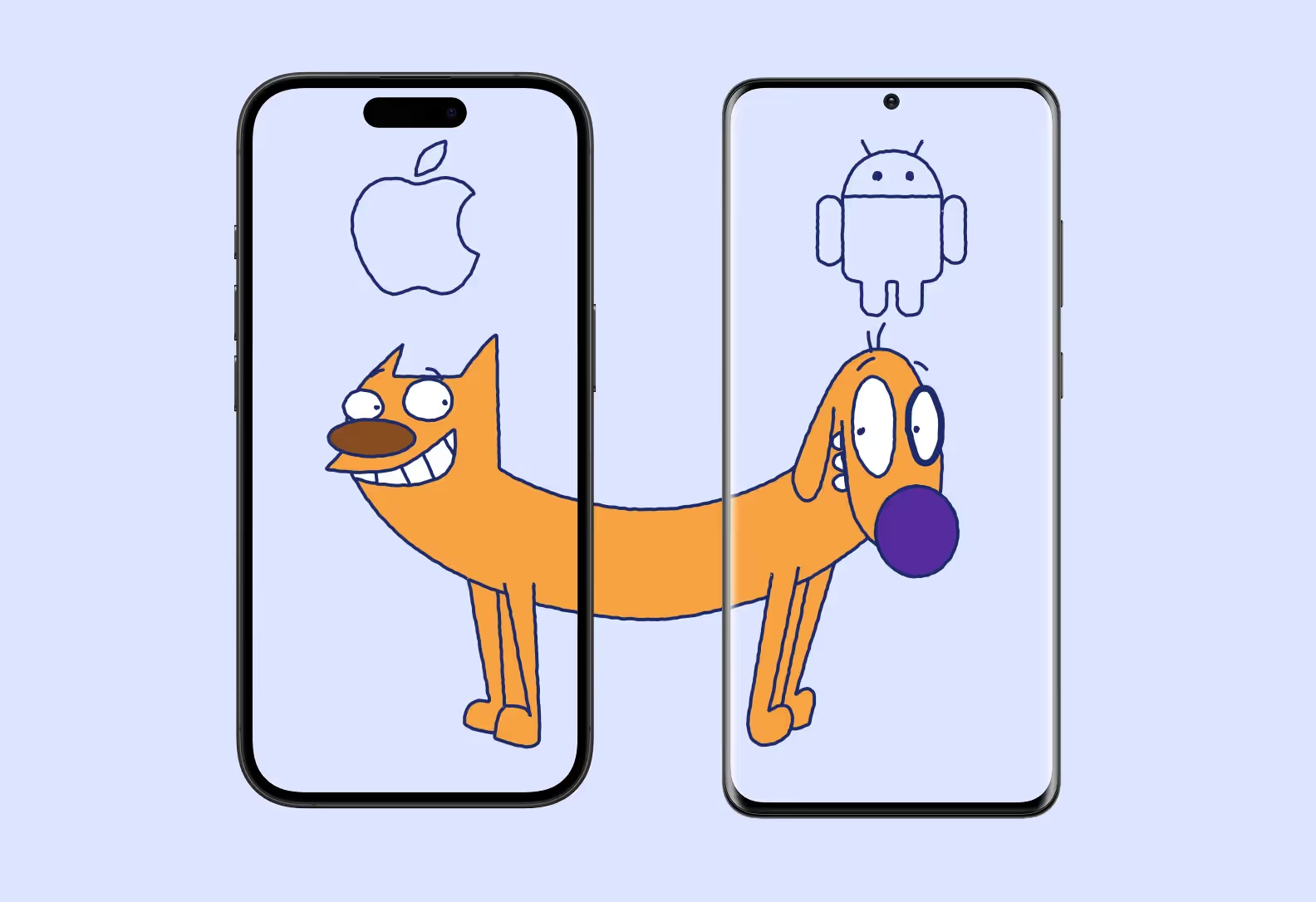
Users need clear navigation, intuitive flows, and a polished interface to feel comfortable linking their bank accounts or investing money. A minimal design might keep costs lower, but a carefully crafted UI/UX can significantly boost retention and engagement.
Remember: poor design is one of the main reasons fintech startups fail to gain traction. Investing in UI/UX design pays off in long-term user loyalty, even if it adds to the upfront budget.
This is where many first-time fintech founders underestimate costs. Financial apps handle highly sensitive data and often require compliance with standards like KYC (Know Your Customer), AML (Anti-Money Laundering), GDPR (data protection), and PCI DSS (payment security).
Ensuring compliance often means integrating third-party verification tools, implementing data storage safeguards, and going through external audits. Each of these steps requires time and expertise. Skipping them is hardly an option.
Security goes hand-in-hand with compliance, but it’s broader. Beyond meeting regulations, your app needs robust encryption, secure authentication methods, fraud detection systems, and possibly AI-driven anomaly monitoring.
Building these layers into your product can add significantly to development costs. But it’s important to remember that a single security breach can cost far more than the investment in getting it right the first time.
Where your team is located plays a massive role in budget planning. Developers in the US or Western Europe often charge between $100–$200 per hour, while equally skilled teams in Eastern Europe may cost $40–$80 per hour.
Asian teams can be even more affordable, but communication challenges or time zone differences may add hidden costs. Many fintech businesses find a balance by working with experienced teams in cost-efficient regions, combining quality with more reasonable pricing.
But this factor may turn out to be very important: remember our experience with the Kuwaiti payment system we mentioned earlier in the article!
The technologies you choose also influence cost. A modern, scalable stack — like Node.js for backend, React Native for cross-platform development, and AWS for cloud infrastructure — may have higher upfront costs but reduces technical debt and long-term headaches.
Legacy systems or outdated frameworks might look cheaper at first but can quickly become bottlenecks as your app scales. A smart tech stack decision is an investment in future-proofing your business.
Fintech development (or any other development) doesn’t end with launch. Apps require regular updates to fix bugs, improve performance, and stay compliant with changing regulations. You’ll also need ongoing server monitoring, security patches, and potentially new features based on user feedback. Post-launch support typically eats up 15–20% of your annual development budget. Treat it as part of the cost of ownership, not an afterthought.
At Purrweb, we use the Agile approach and split fintech development into stages — so you know exactly what you’re paying for and what results to expect.
Result: clear project roadmap and feature list.
Estimated price: $4,500
We define the product vision, analyze competitors, and identify must-have features. This step ensures we’re building the right thing for the right audience.
Result: interactive prototypes ready for user and stakeholder validation.
Estimated price: $8,000
Our designers create user flows, wireframes, and a sleek interface that makes financial data easy to understand.
Result: fully functional MVP you can launch and test with real users.
Estimated price: $60,000
We build a lean version of your app with core features only — quick to market but strong enough to attract early adopters.
Result: stable, secure app that works flawlessly across devices.
Estimated price: $8,000
Every feature undergoes security checks, bug testing, and usability reviews. We test throughout our entire process, but at this stage, we do a final check to see everything works exactly as it should.
Result: market-ready fintech app with continuous improvements.
Estimated price: from $15,000
We deploy the app, monitor its performance, and roll out updates based on user feedback. Post-launch support keeps your app competitive and compliant.
Building a fintech app is a serious investment — costs depend on the app type, features, compliance, and many hidden factors like design, security, and team location. With the right approach, though, every dollar goes into creating a secure, user-friendly product that drives business growth.
➡️ At Purrweb, we know how to balance budgets with bold ideas. If you’re ready to turn your fintech vision into reality, <a class="blog-modal_opener">let’s build it together</a>.